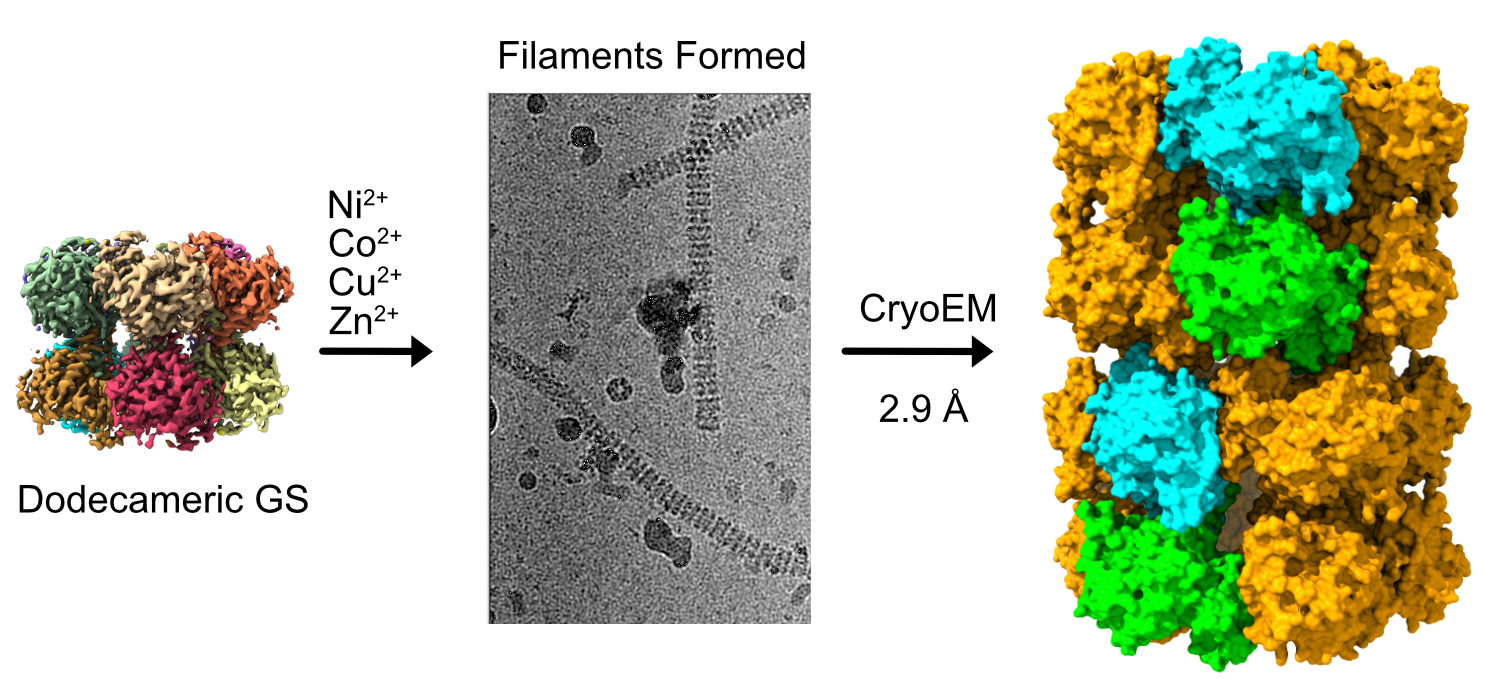
 中央研究院 生物化學研究所
中央研究院 生物化學研究所
Escherichia coli glutamine synthetase (EcGS) spontaneously forms a dodecamer that catalytically converts glutamate to glutamine. EcGS stacks with other dodecamers to create a filament-like polymer visible under transmission electron microscopy. Filamentous EcGS is induced by environmental metal ions. We used cryo-electron microscopy (cryo-EM) to decipher the structure of metal ion (nickel)-induced EcGS helical filament at a sub-3Å resolution. EcGS filament formation involves stacking of native dodecamers by chelating nickel ions to residues His5 and His13 in the first N-terminal helix (H1). His5 and His13 from paired parallel H1 helices provide salt bridges and hydrogen bonds to tightly stack two dodecamers. One subunit of the EcGS filament hosts two nickel ions, whereas the dodecameric interface and the ATP/Mg-binding site both host a nickel ion each. We reveal that upon adding glutamate or ATP for catalytic reactions, nickel-induced EcGS filament reverts to individual dodecamers. Such tunable filament formation is often associated with stress responses. Our results provide detailed structural information on the mechanism underlying reversible and tunable EcGS filament formation.
